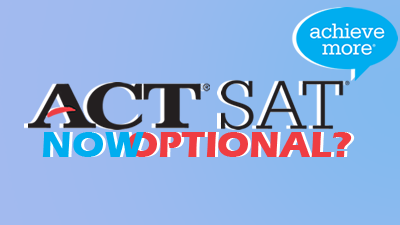The Rise of Test-Optional Schools

Every year more colleges become test-optional in America. What exactly does going test-optional mean? Well, for starters, it’s an upcoming country-wide policy ending SAT and ACT requirements in college applications. A few of the universities that are using this new policy are The University of Chicago, Bowdoin College, University of Rochester, Smith College, and The Juilliard School. These are just a few of the 850 schools that have recently started not requiring these standardized test scores. Standardized tests fail to measure the potential of many minorities and students of low income, leaving them at a huge disadvantage when being considered for admissions, especially because testing costs money, and it can be really expensive.
Standardized tests can be valuable in predicting college-readiness, but there are also multitudes of reasons that these tests can be harmful. First and foremost, they cause and create major stress. Students really feel the pressure when it comes to performing well on these high stakes exams. The scores affect student confidence. Because students know that these scores may affect their future lives, they do whatever they can to pass them, sometimes cheating to get ahead. In the world of standardized testing, there is no shortage of stories of cheating. Clearly these tests place undue pressure on students and for what? A measure that may or may not represent their ability to succeed.
This brings me to my next point: standardized tests don’t value diversity. There is a wide range of differences in the people who take standardized tests. There are different levels of proficiency in English, different cultural backgrounds, different learning styles, different family backgrounds, and different life experiences. How can a test predict accurately the knowledge and understanding of such a wide variety of people? The creators of the tests treat them as all groups are identical, sometimes not accounting for language, cultural, or social aspects of the individual.
Most of the schools listed above went through with these changes to attract more minorities to apply to their institutions. Dropping the requirement typically increased the number of applications submitted. While this is certainly a positive attribute of the new policy, it can also create a deceptive profile for those particular schools. In theory, schools that receive more applications under the test-optional policy will reject more applicants and appear more selective. With low scores out of the tabulation, the average test scores rise and make the university appear better than its competitors.
Test-optional policies are affecting diversity on campus, too. There has been an increase of African American and Latino students attending these universities where test scores are not required. Most liberal arts colleges have been getting more diverse in recent years when these new methods became common, and while that does not necessarily mean that the test-optional approach caused it, it certainly appears that more high school graduates from minority groups are taking advantage of the policy and thriving because of it.
So, going test-optional is proving itself to be a great improvement for colleges in America. While most people can agree that the test-optional trend will continue to grow, most doubt that the SAT or ACT exams will be going extinct any time soon.

Liz Vasbinder is a sophomore and a first year member of the Crimsonian Staff. She plays the mellophone/french horn in the DHS Marching Band. Liz enjoys...





